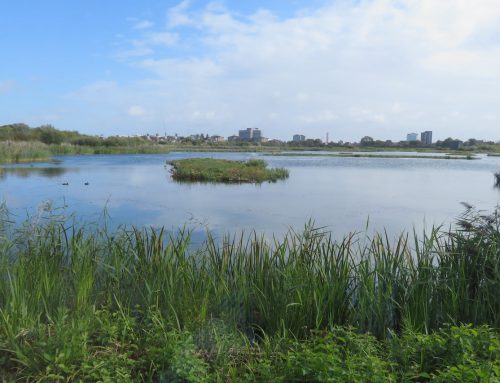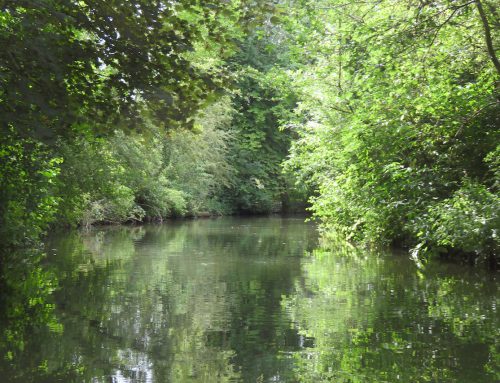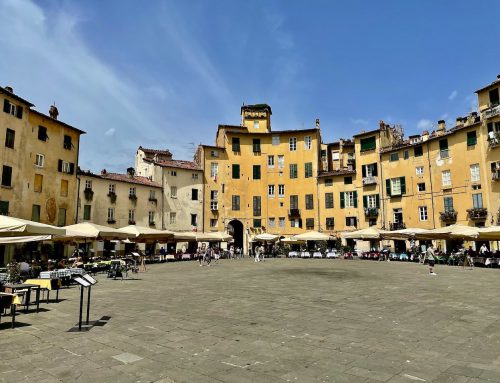Langdale axes are the best
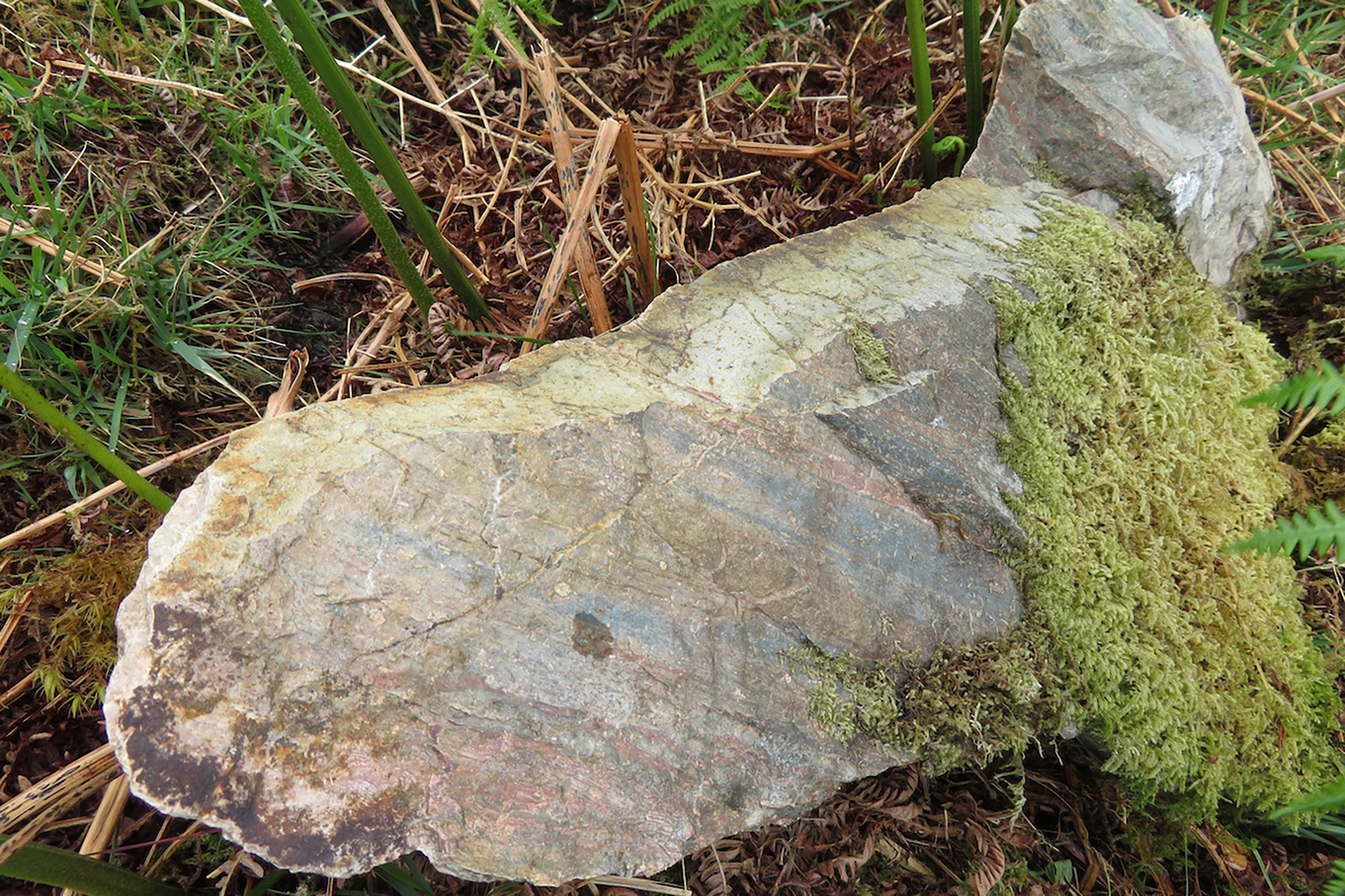
The rough-out had lain there for 6000 years

The rough-out had lain there for 6000 years
Great Langdale Valley, Ambleside, United Kingdom
I adore mountains. Always have done, always will do. There is something about a craggy peak that lifts my spirits and makes me feel I want to be out there, savour the peace, breathe clear air, and spend time alone in my otherwise crazy existence. It was why, on a perfect-weather day, I was sat atop the Lake District’s Pike of Stickle, gazing out over a green and welcoming Great Langdale Valley.
It was one of those days that makes the National Park a World Heritage Centre, the reason why so many visit, and share the joy. Mostly visitors are at ground level, perhaps taking a steamer up and down Windermere, guzzling Grasmere gingerbread, or studying the finer points of Beatrix Potter and William Wordsworth.
I was not thinking of literature, nor for that matter of writing. I was thinking of Neolithic Man. Six thousand years ago, near to where I was daydreaming, and listening to the bleating of Herdwick lambs in the valley, 2000 feet beneath me, had been a factory. It was here that Stone Age Man had produced his axes. The Langdale Axe Factory exported its labours for many hundreds of miles. More than a quarter of stone axes found anywhere in Great Britain were made only metres from where I was sitting. Langdale axes were the Gucci, the Louis Vuitton, the Hermès of axes. If you wished to give a top-end gift, if you wanted to use the best, then you needed a Langdale stone axe in your hand.
Much of forested Britain was laid low by Langdale axes, as man slowly made his presence felt. This was a time, 4000 B.C.E., when the population of the country was a mere 220,000. The Lake District was densely forested, although its unmistakable peaks, just like the Pike of Stickle on which I was sitting, poked above the treeline, and were visible from many miles away. There was something mysterious and attractive about the mountains to Neolithic Man, just as they remain a magnet for so many walkers today. Even now, there are some who believe the Pike of Stickle is holy.
The principle of making a stone axe was easy, but the labour was clearly hard. Right under where I was sitting, on the summit of the mountain, lay seams of green volcanic tuff. In the Stone Age, this was the limousine source of rock. Neolithic Man would remove what were called rough-outs, essentially fledgling axes, from the seams. The rough-outs were then given a vague shape using a handheld hammer-stone. The workers would take shelter in small caves, some of which still remain today. They look tidy and clean, as if waiting for the axe factory to start work once again. Neolithic Man was artistic, too. On the nearby Langdale boulders, which are an Historic England Scheduled Monument, are cups, bosses and concentric rings. Their meaning? No one has a true clue, but their symmetry tells me that Neolithic Man would have made sure his stone axes were perfect.
Once done, the part-made axe was taken across the mountains and down to sea level. Ehenside Tarn, 28 kilometres to the west, was favoured. There, the irregular rough-out was turned into something special. It was polished with sandstone, placed in a wooden haft and, once complete, was sent on to its final destination. This was frequently a very long journey that could take many months to complete. Langdale axes have been found as far afield as Lincolnshire, London and Ireland. One was even found in Poland. In 1869, Ehenside Tarn was drained and plenty of stone and wooden items were revealed. A local solicitor, Robert Darbishire (1826-1908), was a keen collector, and made Neolithic Lakeland his life’s work. Many of his finds have made it to the nation’s collections. There is even one splendid Langdale axe in London’s British Museum, although it may not be Darbishire who put it there.
The name that is perhaps equally synonymous with Langdale axes is Clare Fell (1912-2002), a British archaeologist who was born in Lancashire, studied archaeology in Cambridge and then turned her attention to Great Langdale. The Lady of the Lakes, as she was known, did plenty, not only for women in archaeology, but for the world’s knowledge of Neolithic Lakeland.
Yet as I sat atop my mountain, I was not only daydreaming, I was also feeling pleased. On my solo climb I had strayed from the path that leads from the New Dungeon Ghyll Hotel in the valley, up and alongside the tumbling Stickle Ghyll, to Stickle Tarn, a small lake overlooked by the 736-metre Harrison Stickle. The lake was dammed in 1838 and now supplies water to the people of Great Langdale in the valley below.
I often stray from paths. I realise I should not, especially when alone, but sometimes the temptation is more than I can resist. Some way beneath the Pike of Stickle’s summit, I cracked. I had to find out. I had perhaps taken no more than 20 steps from the main footpath, and there it was - the stone. It was no ordinary find. It was sharp on one edge, blunt on the other, and showed definite signs of earlier handling. Someone had been there before me. I was certain it was a rough-out, part covered in moss, that had lain quietly for millennia, and was waiting to be found. I looked at it for a moment, wondering what I should do. The rough-out was large, tapered and razor-sharp on one edge. It was too heavy to carry and, anyway, I was not about to move 6000 years of history.
I did what I should do. I cheered quietly, touched it, stroked it, photographed it, but did not move the rough-out. I then left it as I had found and plodded upwards to the summit of Pike of Stickle. The mountain, all 709 metres of it, is much loved and much climbed by so many. As summiteers stand exhausted on the very tip of the peak, they admire the view around them, breathe in the fresh air, and listen to the Herdwick sheep in the valley. They take time to savour this piece of classic England.
Yet I doubt many know they are standing in the heart of Neolithic Lakeland, the very centre of stone-axe production for at least a thousand years. Neolithic Man was talented.
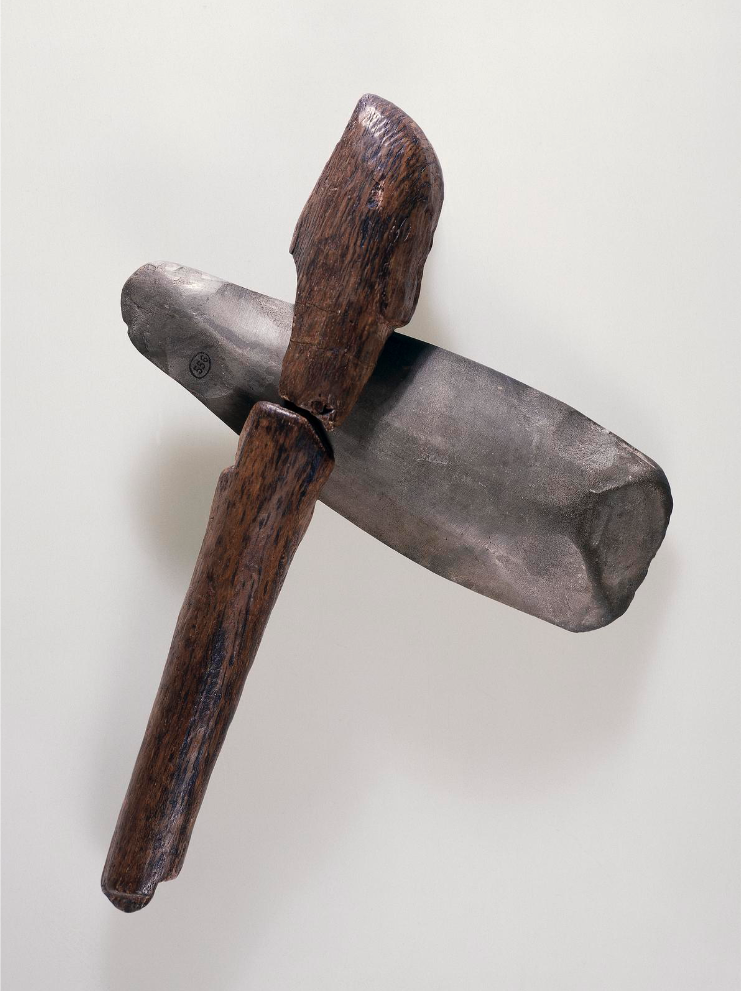
A Great Langdale Axe (courtesy Trustees of British Museum)

Great Langdale Valley with the Boulders to the left (KevinAlexanderGeorge)
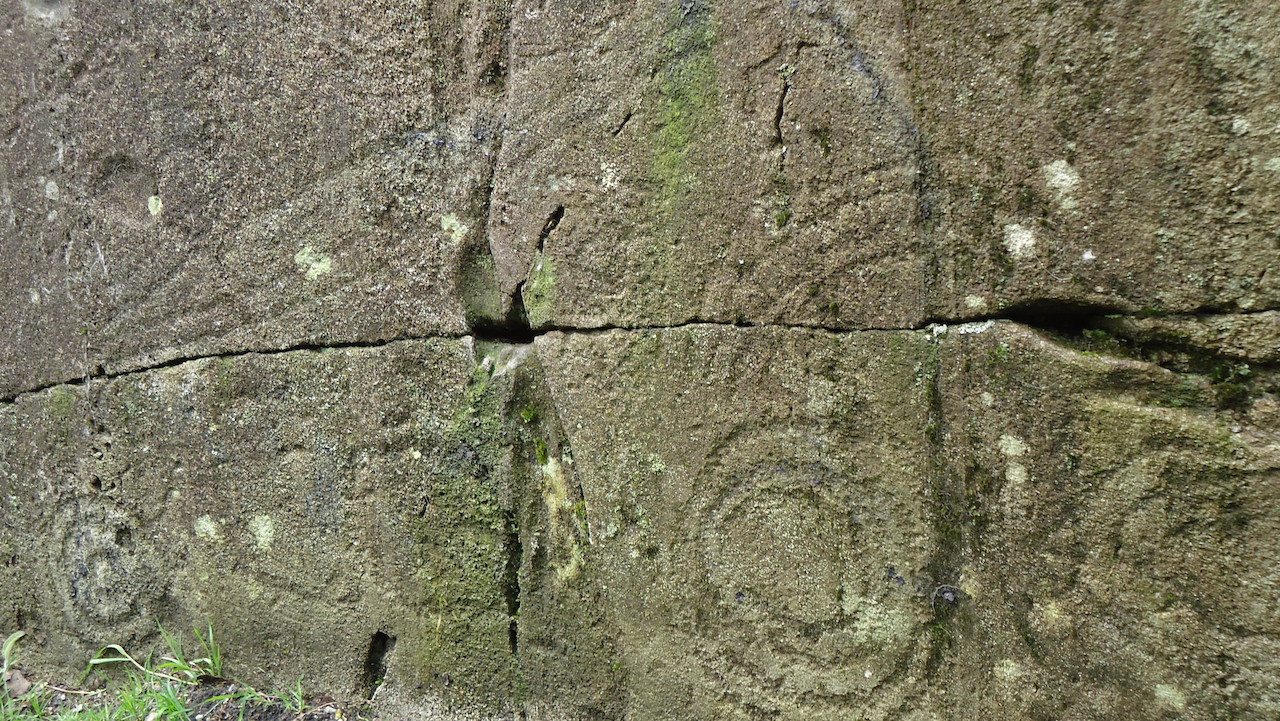
Langdale Boulders - Neolithic man was artistic (JohnPhoenixHutchinson)
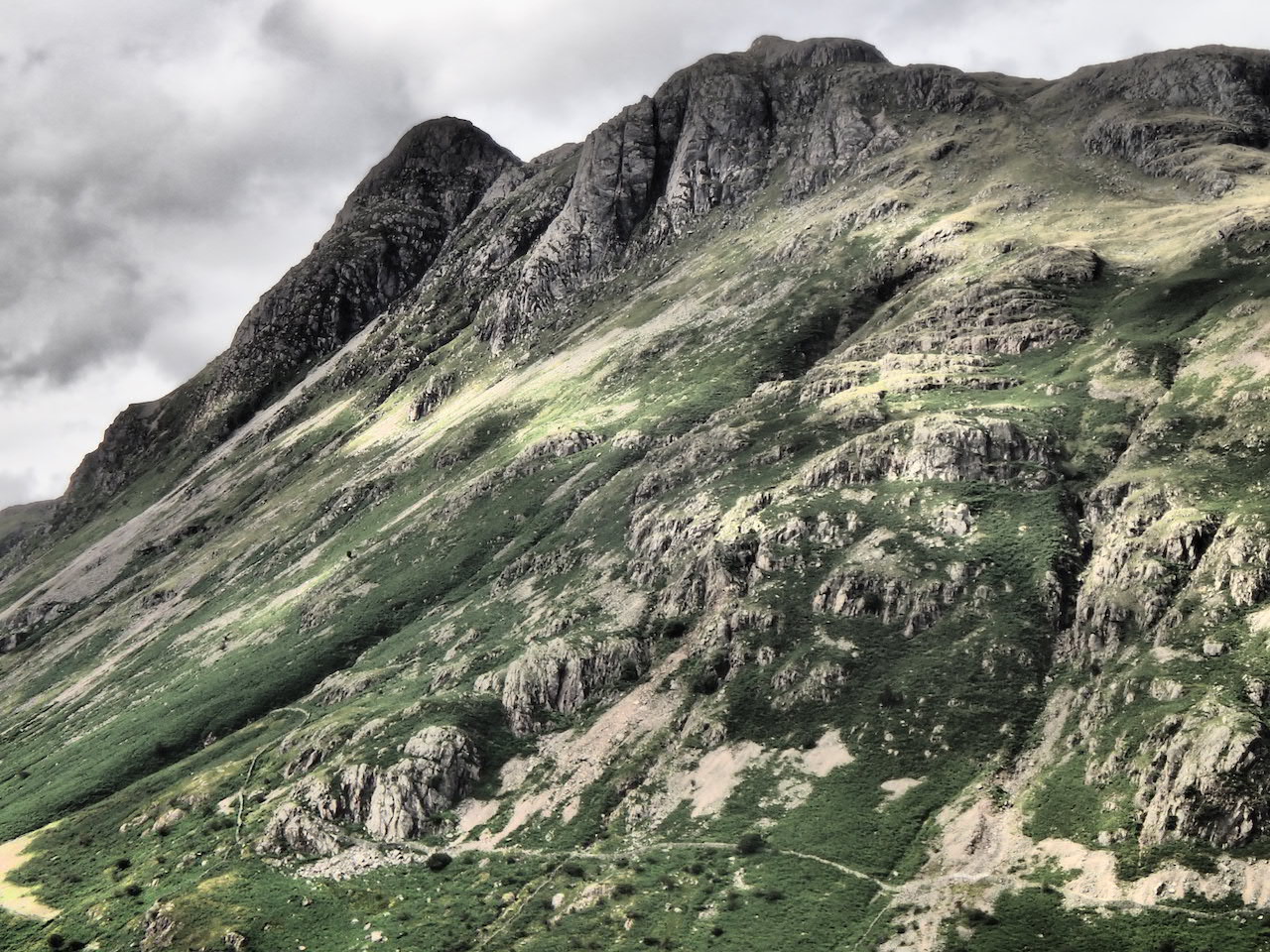
Pike of Stickle, the far pointed peak, was the home of the Langdale Axe Factory (JohnPhoenixHutchinson)



